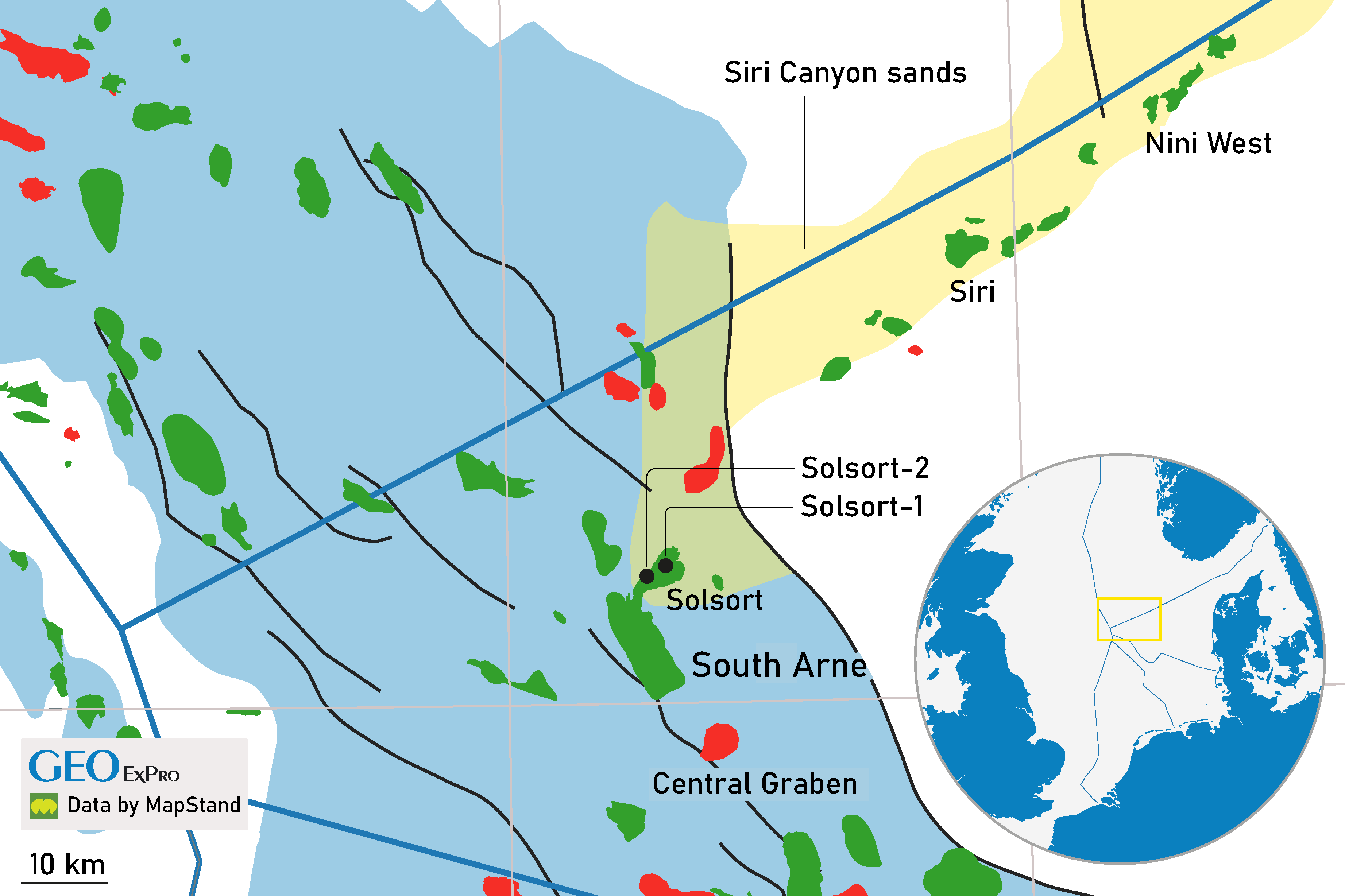When Ineos acquired Hess’ South Arne assets last year, the opportunity to develop the nearby Solsort discovery – already in Ineos’ hands – became a logical next step. So, it is not a huge surprise to see that the Danish Energy Authority has now approved Ineos’ plans to develop Solsort.
Yet, it is the first time since 2017 that a field is being approved for development in the Danish sector. Solsort will also be the first field development after the decision taken in 2020 by the Danish government to stop the production of oil and gas from the Danish sector in 2050 altogether.
Long-offset wells
As expected, Solsort will be developed as a tie-back to the North Platform of the South Arne field. Ineos aims to drill two wells; a water injector placed in the northwest of the accumulation and an oil producer along the southeastern edge.
The decision to develop the discovery through the drilling of long-offset wells has probably meant that only the western compartment can be developed; Solsort consists of two separate accumulations (see map below).

Solsort (East) was discovered in 2010 through drilling Solsort-1 (5504/26-5) by Dong Energy. The oil discovery was further appraised by three side tracks drilled from the parent well, radiating in different directions, of which one had a step-out of almost 5000 ft. Solsort (West) was drilled in 2013 through Solsort-2 (5604/26-6) by Ineos – approximately 2.5 km to the southwest of Solsort-1. Although the parent well did encounter oil, the two side tracks were dry.
In the published environmental impact assessment, a production profile for Solsort (West) shows that the operator expects a peak oil production of 14,000 barrels/day, declining to less than 2,000 barrels/day in four years of production.
Solsort is the westernmost accumulation in the Siri Canyon play, where Ineos has got a significant stake already. This includes the Nini West field that is in the process of being converted to a CO2 storage site (Greensands project).
The South Arne field is an Upper Cretaceous Chalk oil field that was discovered in 1969 but it took about 30 years before first oil from this 125 MMboe accumulation came to market. Similar to Ekofisk, imaging of the reservoir was hampered by a gas cloud, but the wells drilled through it in the 1990s proved a much thicker Chalk section than had previously thought. In 2010, Hess and partners sanctioned the Phase III development whereby 11 new wells were drilled and two new wellhead platforms were installed, aiming to extract an additional 15 MMboe.
Now that Solsort (West) is going to be developed, it may be the last discovery in the Siri Canyon to see first oil.
HENK KOMBRINK

